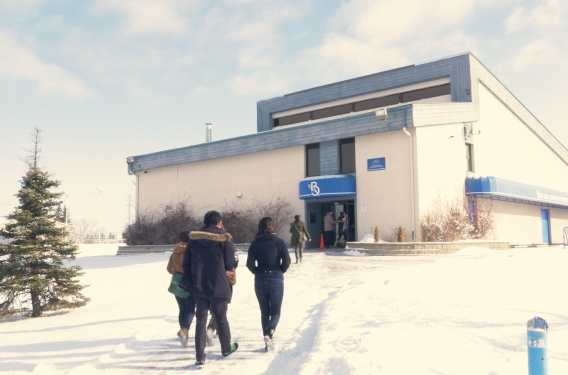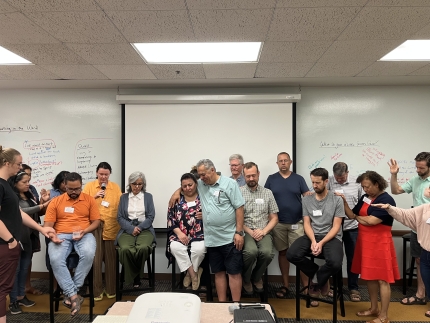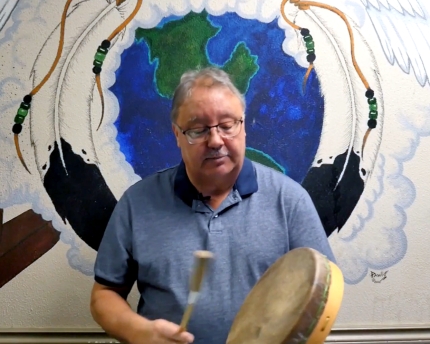February 1, 2023
Becoming a More Welcoming Church for First Nations People


"I want to see more of my people turn their face toward Jesus,” said Agnes Mastin.
Edmonton, Alberta, has the second highest Indigenous population in Canada—but there aren’t many Indigenous Christians part of Christian Reformed Churches in the area. Actually, there aren’t many Indigenous believers part of CRC churches anywhere.
“Those that do not attend do not always feel welcome or understood,” said Agnes Mastin, founder and director of IndigenousChristian.org, and Jeremiah Basuric, a pastor of mosaicHouse Church in Edmonton.
With the support of a Resonate Global Mission Innovation Experiment Grant, Agnes, Jeremiah, and a team of people are taking steps toward changing that—and churches can help.

Different ways of understanding the world can drive a wedge between cultures.
“Because of colonization, Western Christianity has often associated its own cultural preferences and values and ways of being in and seeing the world with the gospel,” said Jeremiah. “They’ve also associated other cultures with paganism or things that are anti-gospel.”
But cultures are diverse, Agnes said. There are diverse ways to worship and walk with God. All too often, however, Indigenous people feel their culture isn’t welcome in the CRC. In some cases, they are even criticized. Agnes recalls the memory of a pastor sternly asking, “What does all this have to do with Jesus?”
Agnes and Jeremiah explain that these attitudes from Western Christians often stem from anxiety or fear.
“And that fear, sometimes it comes out of a bad place—like maybe the fear of the ‘Other,’” Jeremiah said. “But it can also come from a good place. They want to worship God in a good way.”
“Unfortunately, their good way is very narrow,” he added.
Agnes and Jeremiah said that one way the CRC can reach and be more welcoming to First Nations individuals is to avoid syncretizing—or associating only Western traditional values and beliefs with the gospel.
“We have to make sure that we are worshiping God, living in ceremony with the Creator, within the context of our culture. But also within the context of the teachings of Jesus,” said Agnes.
That’s why Agnes and Jeremiah worked with a team of Indigenous scholars and elders to produce short videos explaining Indigenous cultural elements and easing anxiety of believers who are unfamiliar with Indigenous culture and how their way of life and worship relates to the gospel. A Resonate Innovation Experiment Grant made it possible for the team to create the videos and make them accessible for churches to use as resources in their congregations.
“A growing challenge for faith communities in our gospel witness is how to engage well in the practice of barrier-crossing friendships. We felt this experiment could really help congregations to raise their level of awareness and engagement with Indigenous neighbors,” said Claudia Williams, program manager of Resonate’s Innovation Experiment Grant Program.
“The hope is to educate the wider church but also hopefully create a bridge and steps toward a more welcoming atmosphere within CRC churches so when Indigenous people come—if they were ever to come—they would feel welcomed with at least some understanding and empathy within the church,” said Jeremiah.

The 24 short videos cover a variety of cultural elements, including the idea of “Mother Earth,” playing a drum in worship, the promise of heavenly bears, Cree teachings, and more.
For instance, Agnes says that many Christians do not like it when she uses the term Mother Earth. In the first video, she explains: “We don’t pray to Mother Earth. Mother Earth was created by Creator. She was created to provide for all of our needs, all of the necessities of our life … everything in creation, it has a Spirit. Creator breathed life into us. He also breathed life into the trees, into the rocks, into the animals—and everything that has breath, praises the Lord.”
The videos have been tested at mosaicHouse Church, a multicultural church in Edmonton, as well as churches in the Edmonton area who have participated in the CRC ministry Hearts Exchanged.
“Although mosaicHouse has many cultures, Indigenous peoples who attend comment on how they still feel excluded,” wrote Agnes and Jeremiah in their grant application.
In the testing phase, they found the videos have helped.
I want to make this world a better place for First Nations people to live. I want to make Christianity a better religion, a better way of following Jesus. I want it to be more open. I want to see more of my people turn their face toward Jesus.
“In increasing awareness we have heard people say things to this effect ‘I never knew that. I was not well aware of that and it makes it less scary,’” shared Jeremiah and Agnes in a report.
“The focus group was very excited that this project existed. They were very happy to learn about Indigenous culture and gave us some very helpful feedback. The atmosphere of the group was joyous, and we believe that the Holy Spirit is working in his church in a way which has opened up new conversations.”
Agnes and Jeremiah hope that these videos will help educate believers in the CRC and beyond so they can be more welcoming to First Nations individuals.
“I want to make this world a better place for First Nations people to live. I want to make Christianity a better religion, a better way of following Jesus. I want it to be more open. I want to see more of my people turn their face toward Jesus,” said Agnes.
Any CRC church can participate in creating a more welcoming space for Indigenous neighbors by using this video resource. This project is yet not finished—Agnes and Jeremiah are working on incorporating feedback from the focus groups—but these videos will be available free of cost to churches.
“We were blown away by the result of this experiment and are excited to see how God will continue to use the resources being created,” said Claudia.